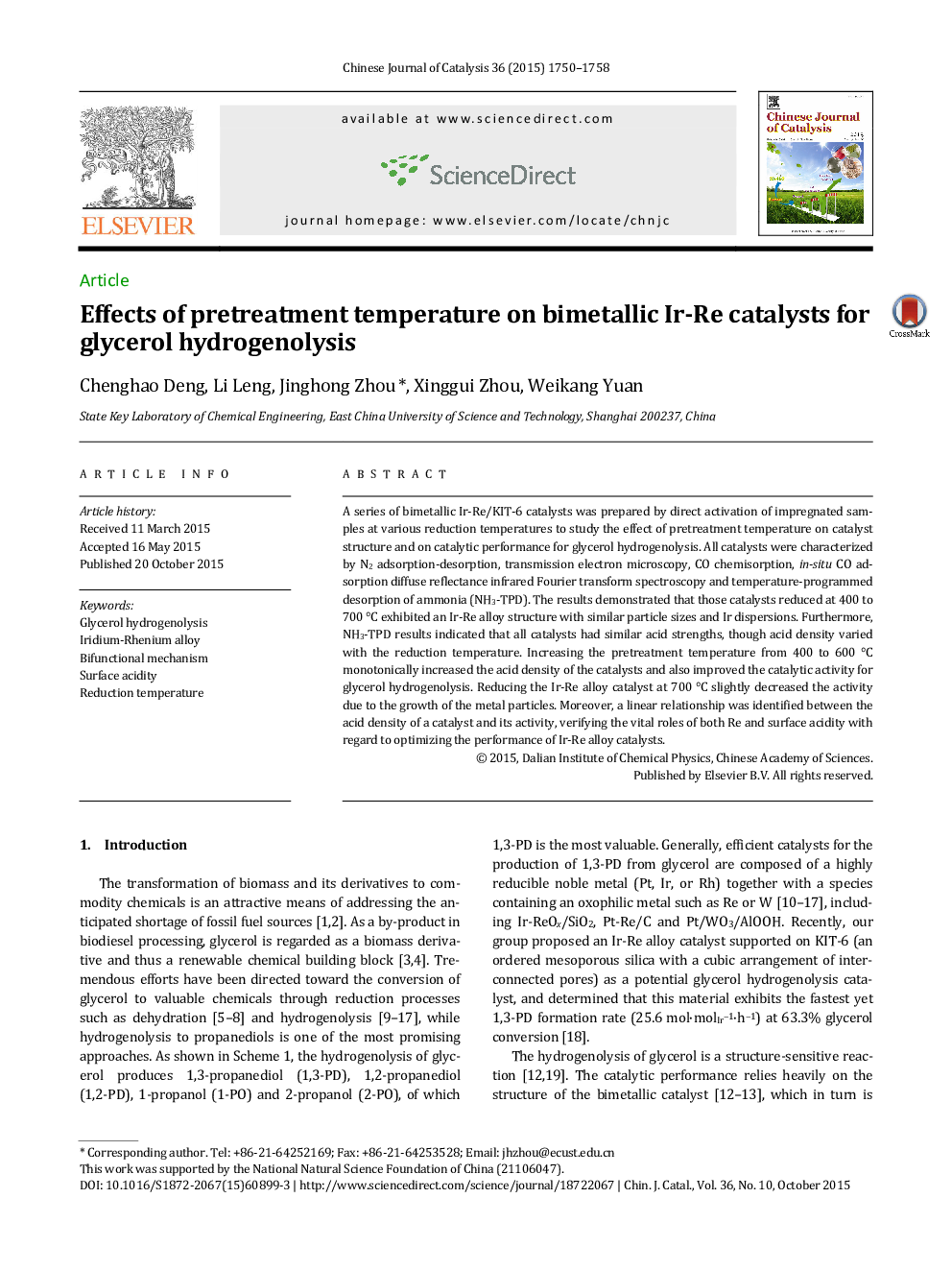| Article ID | Journal | Published Year | Pages | File Type |
|---|---|---|---|---|
| 59194 | Chinese Journal of Catalysis | 2015 | 9 Pages |
A series of bimetallic Ir-Re/KIT-6 catalysts was prepared by direct activation of impregnated samples at various reduction temperatures to study the effect of pretreatment temperature on catalyst structure and on catalytic performance for glycerol hydrogenolysis. All catalysts were characterized by N2 adsorption-desorption, transmission electron microscopy, CO chemisorption, in-situ CO adsorption diffuse reflectance infrared Fourier transform spectroscopy and temperature-programmed desorption of ammonia (NH3-TPD). The results demonstrated that those catalysts reduced at 400 to 700 °C exhibited an Ir-Re alloy structure with similar particle sizes and Ir dispersions. Furthermore, NH3-TPD results indicated that all catalysts had similar acid strengths, though acid density varied with the reduction temperature. Increasing the pretreatment temperature from 400 to 600 °C monotonically increased the acid density of the catalysts and also improved the catalytic activity for glycerol hydrogenolysis. Reducing the Ir-Re alloy catalyst at 700 °C slightly decreased the activity due to the growth of the metal particles. Moreover, a linear relationship was identified between the acid density of a catalyst and its activity, verifying the vital roles of both Re and surface acidity with regard to optimizing the performance of Ir-Re alloy catalysts.
Graphical AbstractA linear correlation between the surface acid quantity of Ir-Re alloys and catalytic activity during glycerol hydrogenolysis was established, and it was found to be possible to modify the acid amount by varying the reduction temperature.Figure optionsDownload full-size imageDownload as PowerPoint slide
